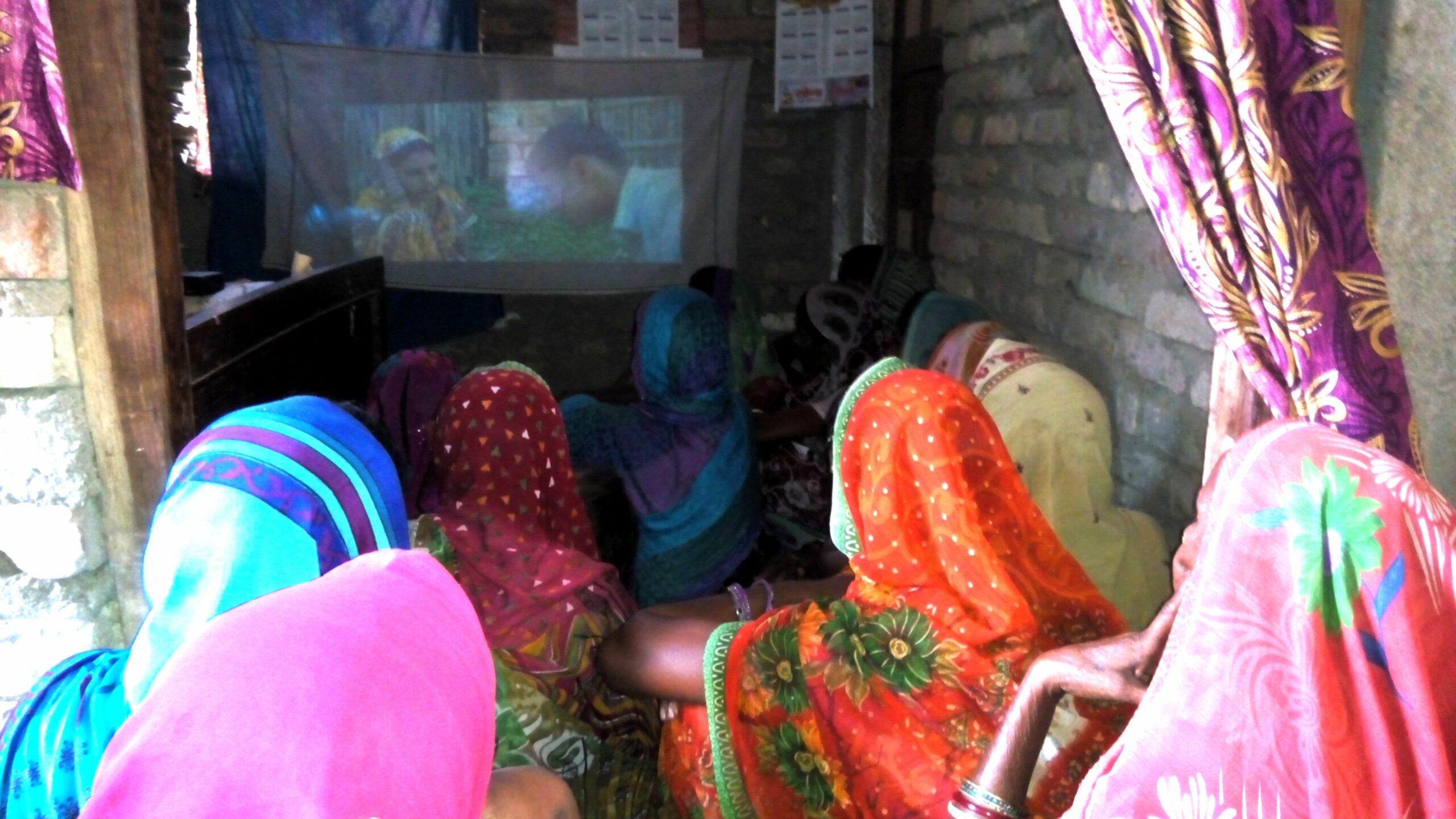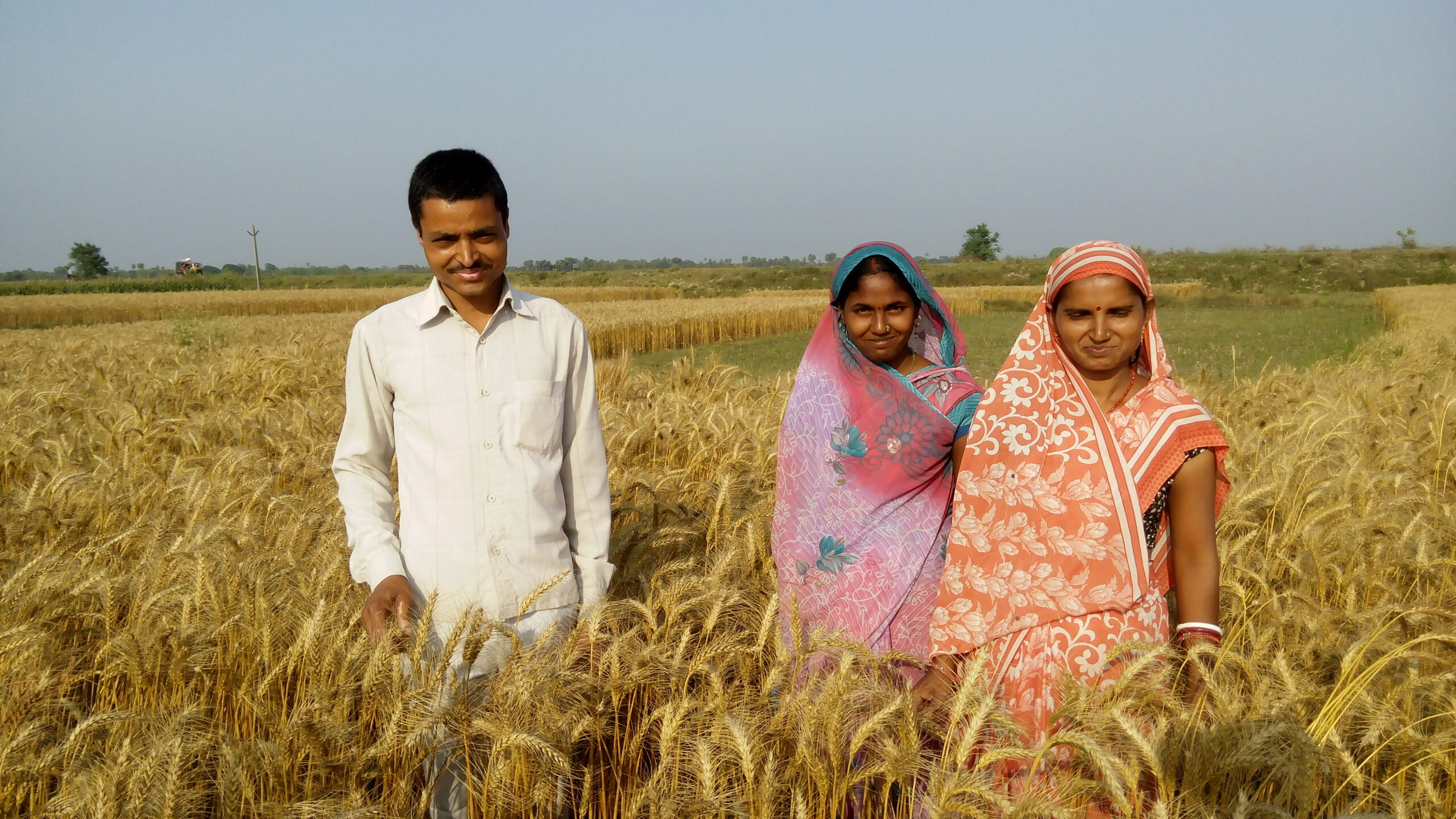To learn more about Digital Green’s AI-powered platform and how it impacts small-scale farmers in India, Ethiopia, Kenya, Nigeria and Brazil, we encourage you to sign up for our newsletter.
Creating spaces for dialogues

Communication is a process that weaves through the socio-cultural fabric of the society. It is not captive to any form of media, rather it develops on its own in different sections of society within their own unique networks. There are however different approaches to communication available for dissemination of information today that allow individuals to make informed decisions – this is the indispensable purpose of development communication.
The United Nations understands Development Communication as a social process based on dialogue using a broad range of tools and methods… seeking change at different levels and includes listening, building trust, sharing knowledge and skills, building policies, debating and learning for sustained and meaningful change.
Participatory is a keyword
Digital Green facilitates behaviour change through a unique approach– involving participatory video production and dissemination and can be classified under development communication and keeps community participation at its core.
Having been part of the Digital Green team since it began its work in Bihar in 2012, I have been witness to the changes on the ground. Our pilot project (in just two blocks of Muzaffarpur, Bihar) was initially focused on producing and screening videos showing cost-effective agricultural best practices.
Our approach evolved and we started working in other domains such as health and nutrition, institution building and financial inclusion. and today we are operational in 18 districts and ready to expand into new regions. At present, there are over 2.4 lakh people in Bihar who have watched a video at least once and more than 1.5 lakh community members have adopted at least one practice seen in these videos.

The video screening is mediated by an individual from within their community who attempts to initiate dialogue and discussion. The audio-visual media assists in easy communication and comprehension among rural non-literate or semi-literate women and men, since it is in their own local language with actors who hail from similar cultural backgrounds as themselves. The discussions also help the community members seek clarifications regarding the efficacy of the best practices shown in the video and make an informed decision to adopt it.
Skill-building
Digital Green also facilitates training programs for extension workers and community members who produce and disseminate these videos, directed towards building and enhancing their skills on equipment handling, documentation and interpersonal communication so that they can facilitate video dissemination where community members can participate and share their feedback and experiences. The documentation process also helps in capturing the feedback and queries and assistance required to resolve issues for which there is no ready-made solutions available locally.
Here the community workers (or mediator) plays a crucial role as a communication channel between the communities watching the video and Digital Green and partner organization. This way, Digital Green’s approach keeps the audience at the heart of it.
Digital Green methodology also has a mechanism built into it to verify the reception of the messages. This is done by mediators when they pause the videos at certain important points to reiterate non-negotiable points in the video. This allows them to ask certain standard open-ended questions ensuring the viewer’s comprehension. It also helps mediators to repeat and reinforce the important information among viewers.

The ripple effect
I have seen many farmers become role models among their community and improving their own and their community member’s knowledge of agricultural as well as better health and nutrition practices. One such person is Ajit Kumar, a mediator in Rajika Rampur Village, Morwa Block, Samastipur District, Bihar who has been using our video-based model since October 2014.
Ajit Kumar was recently adjudged a category (top-level) mediator by Digital Green since he had been able to demonstrate a very high adoption rate among his audiences in the last quarter of 2014 through 14 videos that he screened. Ajit has since then worked with over 141 farmers, helping them adopt Systematic Wheat Intensification (SWI) method and best practices related to some locally grown vegetables.

He has also been encouraging community members to adopt organic and low budget farming techniques by showing Digital Green’s videos on those subjects. Ajit has himself adopted these practices in his own field to grow seven different vegetables in a land measuring 2 Katthas ( a 1/11th portion of an acre) by using organic fertilizer and multi-cropping methods that he learnt through the Digital Green videos.
Leveraging mobile technologies
As we scale up our projects in Bihar as well as other geographical locations, we are also trying to leverage technology in developing other such tools. In Bihar, we conducted a pilot earlier this year, to appraise interactive voice response system (IVRS) as a supportive tool for information exchange. The pilot was conducted in Samastipur district of Bihar and provided a zero cost platform to extension workers to share their experiences and voice their concerns. It also helped our staff to address the issues within a shorter period of time.
IVRS also reduced the communication gap as it was possible to reach all extension workers at once by broadcasting a single message. The IVRS also proved successful in bridging over the problem of women members being unable to voice their concerns at review meetings in the presence of male members. The IVRS became their voice since they could record their responses on the IVRS from their personal space.
Conclusion
In recent times, various forms of communication have emerged as a significant tool of behavior change which has stimulated development across the world. Various media such as community radios, road shows, folk media, street theatres, documentaries and of course participatory videos have been paving the way for the poor to make informed decisions and adopt better practices in the field of agriculture, healthcare, education and other livelihood options.
Since its very inception, Digital Green ensured active participation of the rural community. Voices of the rural population have been heard. For sure, Digital Green’s method has been an innovative and exciting one for bringing about behaviour change among the rural poor in India and sub-Saharan Africa.


